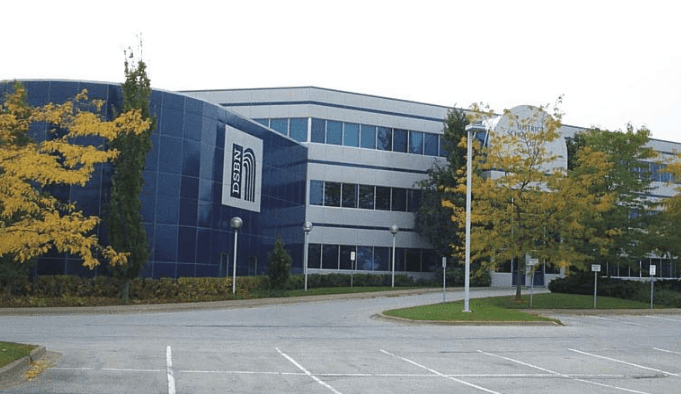District School Board of Niagara (DSBN) trustees passed a 2021-2022 budget totaling almost $523 million dollars at their June 21 meeting, which represents a $22 million increase over the current year. The average cost per student is expected to be just under $13,000.
The budget focuses on the continuation and expansion of academic programs and supports, while investing in Covid-19 recovery.
“Trustees worked to balance Covid-19 recovery, with investment in student programs that provide ongoing resources to help them be successful in school,” said Kevin Maves, Chair of the Finance Committee and Trustee for Niagara Falls, in a press release.
The projected enrolment for 2021-2022 is 39,250 students, an increase of 1,404, or 3.71 percent, from the current year. A consequence of this surge is the hiring of an addition 70 teachers.
An additional $153,000 in mental health funding was allocated, bringing the total to over $1.3 million for board programs.
“One of our core priorities is student mental health and well-being,” said DSBN Education Director Warren Hoshizaki in a media statement. “Investing in the skills and strategies that will be applied by staff is an important part of the support.”
One of our core priorities is student mental health and well-being
The budget includes a $70,000 allocation to fund a concussion partnership with Hamilton Health Sciences (HHS), which will allow enables DSBN staff and students who have a suspected concussion to go to HHS to have an immediate concussion review.
An investment of $190,000 in professional development funding will allow teachers to enroll in DSBN-sponsored Additional Qualification (AQ) courses in mental health, First Nations education, mathematics, literacy, and equity.
The budget also provided $100,000 for a Try-a-Trade program, given the demand for skilled trade careers as part of Ontario’s economy, and $65,000 for a Tutors in the Classroom program, which will stress literacy and numeracy in elementary grades.
Niagara Catholic’s Board of Trustees approved a $268-million budget on June 22, representing a slight increase over the 2020-2021 budget. Targeted priorities include mental health supports, reading and mathematics remediation, $31 million for special education, Indigenous studies, and $4.8 million in funding for Covid recovery.
Director of Education Camillo Cipriano said that the budget was created after a consultative process with stakeholders, whose input was valuable in identifying priorities.
“We believe that this budget addresses the needs of the system for the coming year, and we will continue to monitor and review spending and adapt as necessary to address any changing needs that may emerge,” he said in a press release.
Enrolment is expected to continue to decline slightly in the Catholic system, a trend which commenced in 2017. About half of its elementary schools have fewer than 250 students, and five of its eight secondary schools are expected to be below 750 in 2021-22. The total student loss next year is expected to be 200 students, with a projected enrollment of 19,944.
Blessed Trinity Catholic Secondary School in Grimsby and Notre Dame College School in Welland will be getting new artificial turf sports fields worth $3 million, which are expected to be ready for play in the 2022-2023 school year. The board has said it plans to ensure all eight high schools within its jurisdiction have artificial turf fields. The DSBN currently has eight synthetic turf fields and tracks, with an expectation to add more.
A new development at the DSBN includes a revision of its school naming and renaming policy, to include more community involvement in the process. The framework allows schools not involved in an accommodation review to ask the board to create an ad hoc naming committee for their school, with recommendations to then be brought to trustees for approval.
The rationale underscores the role of school councils as an important advisory body and a link between parents, the community and the board. In the past, new school names were simply presented to trustees at a board meeting, and a decision was rendering via a vote.
DSBN’s Trustee for Thorold and Pelham, Nancy Beamer, voiced concern that the school ad hoc naming committees could supersede authority from trustees, essentially allowing them to thwart the will of elected officials. But DSBN Chair Sue Barnett said school names are important to communities, and accordingly the school ad hoc committees should be given the lead on such discussions.
Many Pelhamites will wish this policy change was retroactive, given the furor in recent years over the renaming of E.W. Farr Memorial Public School. Trustees voted to change the name to Wellington Heights Public School in 2017, and quashed a grassroots effort to revert it back to its original name. At that time, Beamer said the school’s new namesake, the Duke of Wellington, had no historical significance locally—indeed, never setting foot in Canada— and was an anti-Semite who perpetuated the marginalization of Indigenous people.
Wellington, whose given name was Arthur Wellesley, was a British statesman and prime minister in the 1800s. Despite defeating Napoleon at the Battle of Waterloo in 1815, he was unpopular in England, the public regarding him as aloof and rude. E.W. Farr was a respected local educator, who served as principal of Fenwick Public School for 34 years.



